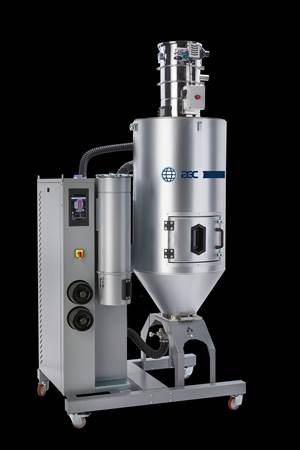Get Better At Drying
Editorial
Supplement coming in May will focus on this vexing problem.
I’ve been a journalist for two different plastics magazines over the last 27 years. During that period of time, I’ve heard over and over again—from materials suppliers, machine builders, and processors—that resin drying was among the most (if not the most) vexing technical problem in molding and extrusion plants today.
And this is not a material-specific issue. Rather, it seems to run the gamut of any kind of material that needs to be dried before processing. And frankly, I think the economic turndown a few years ago made matters a bit worse, as many processors were forced to downsize and lost some of their most senior, savvy technical people. You might be surprised at the number of emails I receive a month from readers asking what they need to know to dry this or that material. Or you might not be surprised at all.
We’re aiming to do something about this knowledge void. The May issue of Plastics Technology will come to you in a polybag together with another publication from us—we call it a supplement—that will focus specifically on drying. Not about new products for drying—we devote plenty of editorial coverage to that subject in the magazine. This supplement will focus on the why’s and how’s of drying. If you run materials that need to be dried, you’ll want to read this special publication as soon as you get it. And you’ll want to keep it, because the information in it will still be useful days, weeks, months, and years later.
Let me give you a little preview of the contents of this supplement. First, we will have a feature authored by noted consultant John Bozzelli, who authors our Injection Molding Know-How column every issue, on why you need to dry resins, what happens if you don’t do it properly, and how to specify, operate, and maintain a dryer. John will even provide a handy-dandy checklist of drying do’s and don’ts, based on his decades of experience teaching Scientific Molding to processors across the country.
A second article will be authored by yet another name familiar to readers of Plastics Technology: Mike Sepe, a guru on the subject of polymers, who writes our regular Materials Know How column. Mike will describe in detail what you need to know to dry a range of specific materials, including PET, PC, ABS, PLA, and some of the trickier ones such as nylon and TP urethane.
The third component of this supplement will focus on best practices from processors who are proficient in drying and skilled at evaluating, operating, and maintaining their dryers, and who know when they need additional drying capacity. This is real-world, processor-to-processor advice right from the plant floor. We think you will find it particularly handy.
So please be on the lookout for this supplement that will come with the May issue of this magazine. I think you’ll want to read it. And keep it. And hopefully refer to it time and again.
The cover image of this supplement will look like the one on this page. Of course we took some creative license with this image. Surely no one would ever think of drying their material with a salon blow dryer. Would they?
Related Content
A Cost Saving Modular Approach to Resin Drying Automation
Whether implementing a moisture-sensing closed-loop system for a single dryer, or automating an entire plant, technology is available to take the guesswork and worry out of resin drying. Using a modular approach allows processors to start simple and build more capabilities over time.
Read MoreWhy (and What) You Need to Dry
Other than polyolefins, almost every other polymer exhibits some level of polarity and therefore can absorb a certain amount of moisture from the atmosphere. Here’s a look at some of these materials, and what needs to be done to dry them.
Read MoreConair Names New Execs in Sales, Systems, Product Management and Extrusion
Moves aimed at strengthening customer focus, market awareness, and technical expertise in key areas of our business.
Read MoreWheel Dryers for Beside-the-Press, Small Central Applications
Precision control on the dryer series reportedly prevents the thermal, chemical and physical material degradation that can result from long drying times at high temperatures and high air flow.
Read MoreRead Next
Troubleshooting Screw and Barrel Wear in Extrusion
Extruder screws and barrels will wear over time. If you are seeing a reduction in specific rate and higher discharge temperatures, wear is the likely culprit.
Read MoreHow Polymer Melts in Single-Screw Extruders
Understanding how polymer melts in a single-screw extruder could help you optimize your screw design to eliminate defect-causing solid polymer fragments.
Read MoreUnderstanding Melting in Single-Screw Extruders
You can better visualize the melting process by “flipping” the observation point so that the barrel appears to be turning clockwise around a stationary screw.
Read More









